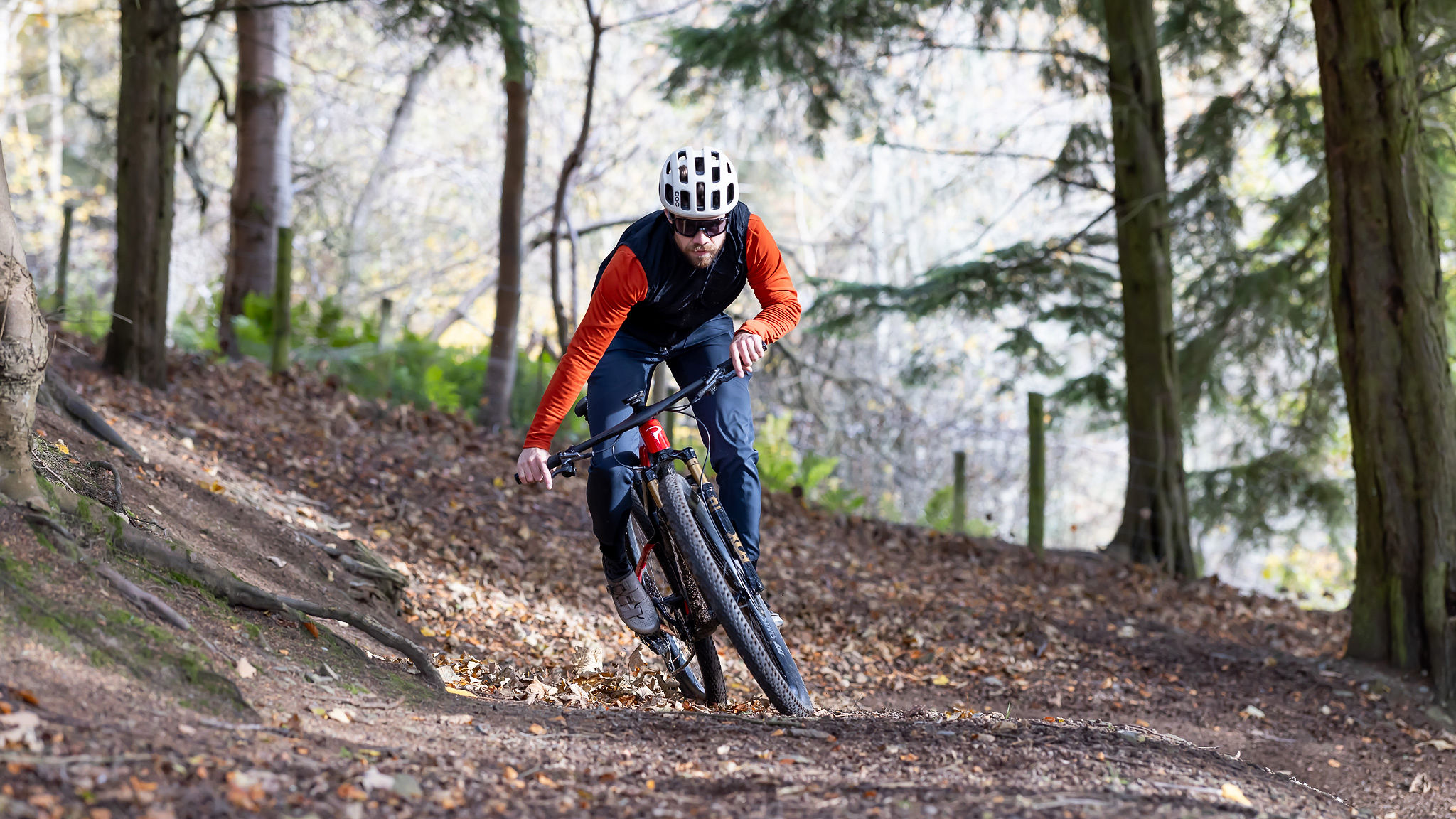Best electric mountain bikes – the top-rated e-MTBs we've tested
With a motor between the cranks, the best e-MTBs unlock huge potential for increasing your riding range and powering up the climbs. Here's our expert pick...
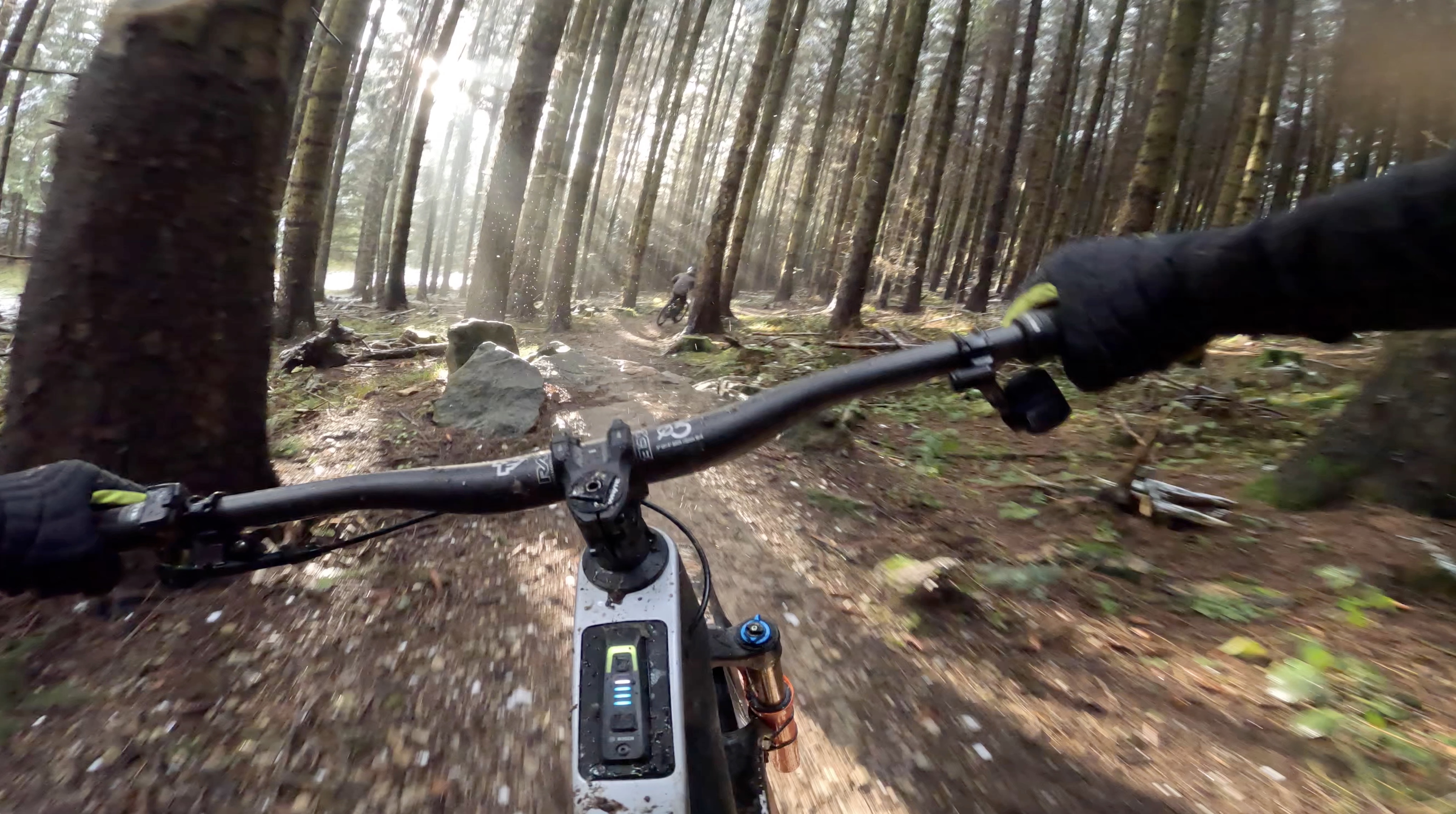
After riding the vast majority of the best electric mountain bikes currently on the market, our test team has been thoroughly impressed. The latest crop of pedal-assisted mountain bikes has reliable motor systems, great components, and excellent suspension, making them a blast to ride on all manner of trail types.
E-MTBing is massively popular and if you head out on the trails you'll see loads of riders hammering around with electrical assistance. There are many reasons why riders would opt for an e-MTB rather than a regular bike, whether it's packing in as many runs as possible, fitness issues, or simply preferring the different riding style of an e-MTB.
All the bikes here are full-suspension as hardtail e-MTBs are not quite up to the job of full-on mountain biking. They can still be a blast to ride on easy trails or fire roads though.
Every model in this guide has been tested by at least one of our experts and we've come up with a definitive list of the top e-MTBs on the market.
For those with less cash to splash, we also have a guide on the best budget e-MTBs. And if you need more advice before taking the plunge on an e-MTB, you'll find buying advice at the bottom of this page. You might also be interested in our article on 10 things you need to know before buying an electric mountain bike.
Best electric mountain bikes
Why trust BikePerfect
1. Best electric mountain bike overall
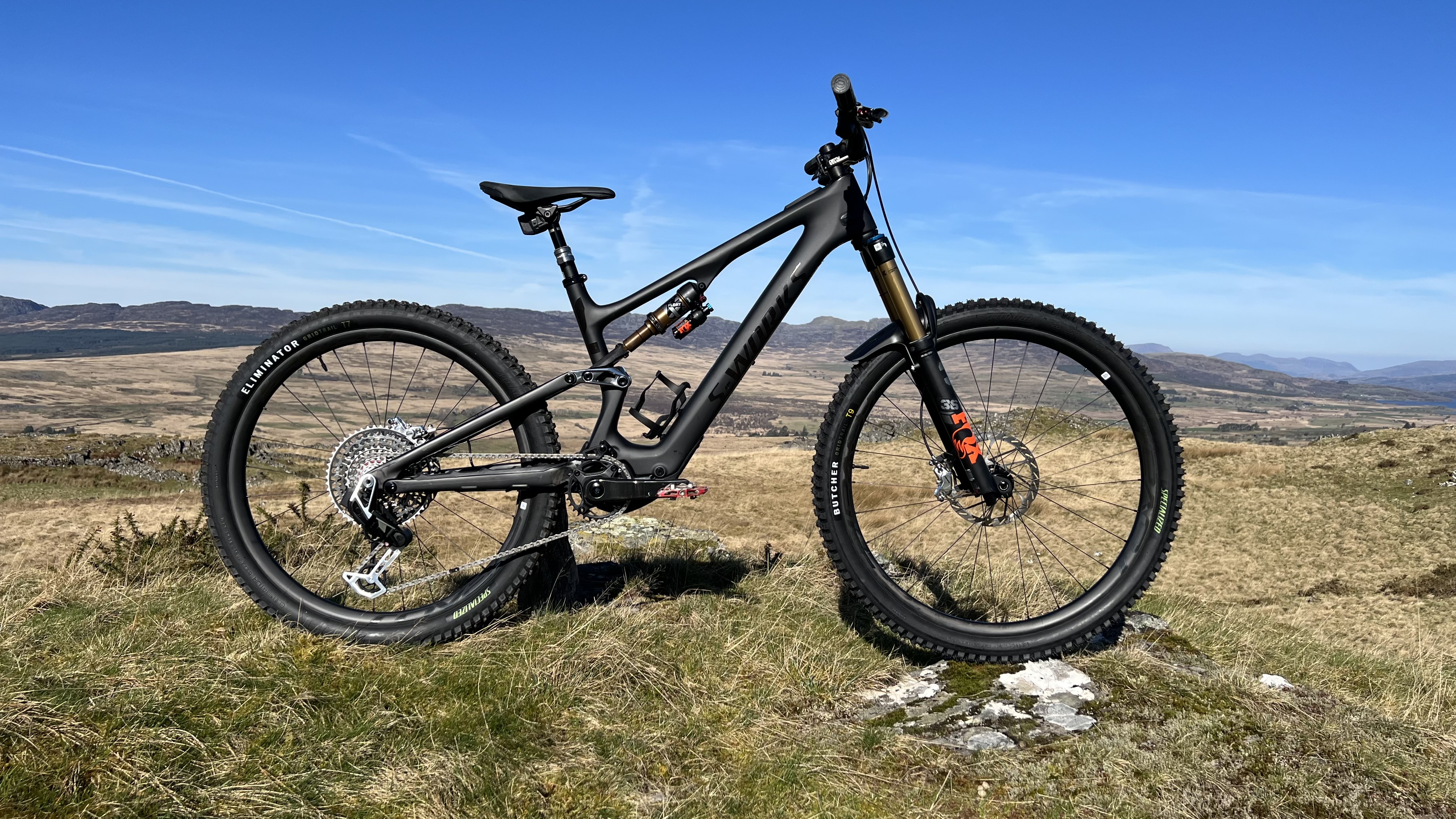
Specifications
Reasons to buy
Reasons to avoid
Specialized’s latest S-Works Turbo Levo SL II has more power, more suspension travel, rad adjustable geometry and a rowdy mixed wheel build, but it’s still seriously lightweight.
A 10mm increase in travel to 160mm front and 150mm rear matches the non-electric and excellent Stumpjumper Evo. The Levo SL II also adopts the Stumpy’s super easy to switch headset inserts and shock link flip-chip so you can switch from the default 64.25-degree head angle to 63 or 65.5 degrees. A second pair of eccentric flip-chips let you run either a 29in or 27.5in rear wheel without disturbing other geometry. Interestingly, the SL II comes with a 27.5in rear as standard, while the Evo is a 2 x 29er by default.
The frame is Specialized’s well-proven Fact 11 composite with different “Rider Engineered” layups designed to give a consistent ride character for each of the S1 to S6 sizes. There are also proportional geometry changes to the different frames and you get a bottle cage that’ll take a full size bottle and soft chain quietening/ rock shrugging armor where you need it.
The custom 320Wh capacity battery is unchanged from the previous model and you still get a 160Wh bottle style range extender supplied 'free' with the S-Works. However, the SL II gets an all new SL 1.2 motor. This uses a two-piece honeycomb motor casing and a greater gain gearbox, increasing maximum power up to 50Nm and 320W. That’s a 43 percent increase in potential poke over the previous motor while actually reducing weight and dramatically reducing noise.
Our reviewer, Guy Kesteven, found it easy to forget he was riding an e-bike, "with none of the usual snowplough/runaway train terror of extra weight on steep descents and it's genuinely lively and poppy on flow trails, rather than needing heaving around to avoid high siding."
Overall, our trail testing showed that it's a super adjustable, enduro-confident yet agile fun-focused shredder, with excellent pedaling manners, a very natural feeling range and speed boosting motor, class leading electronics and dealer support. It’s very light too. This S-Works version does come with a serious price-tag, though the range starts with the Comp Carbon version at $8,000 / £7,000.
For more info, see our full Specialized S-Works Turbo Levo SL II review.
2. Best full power electric mountain bike
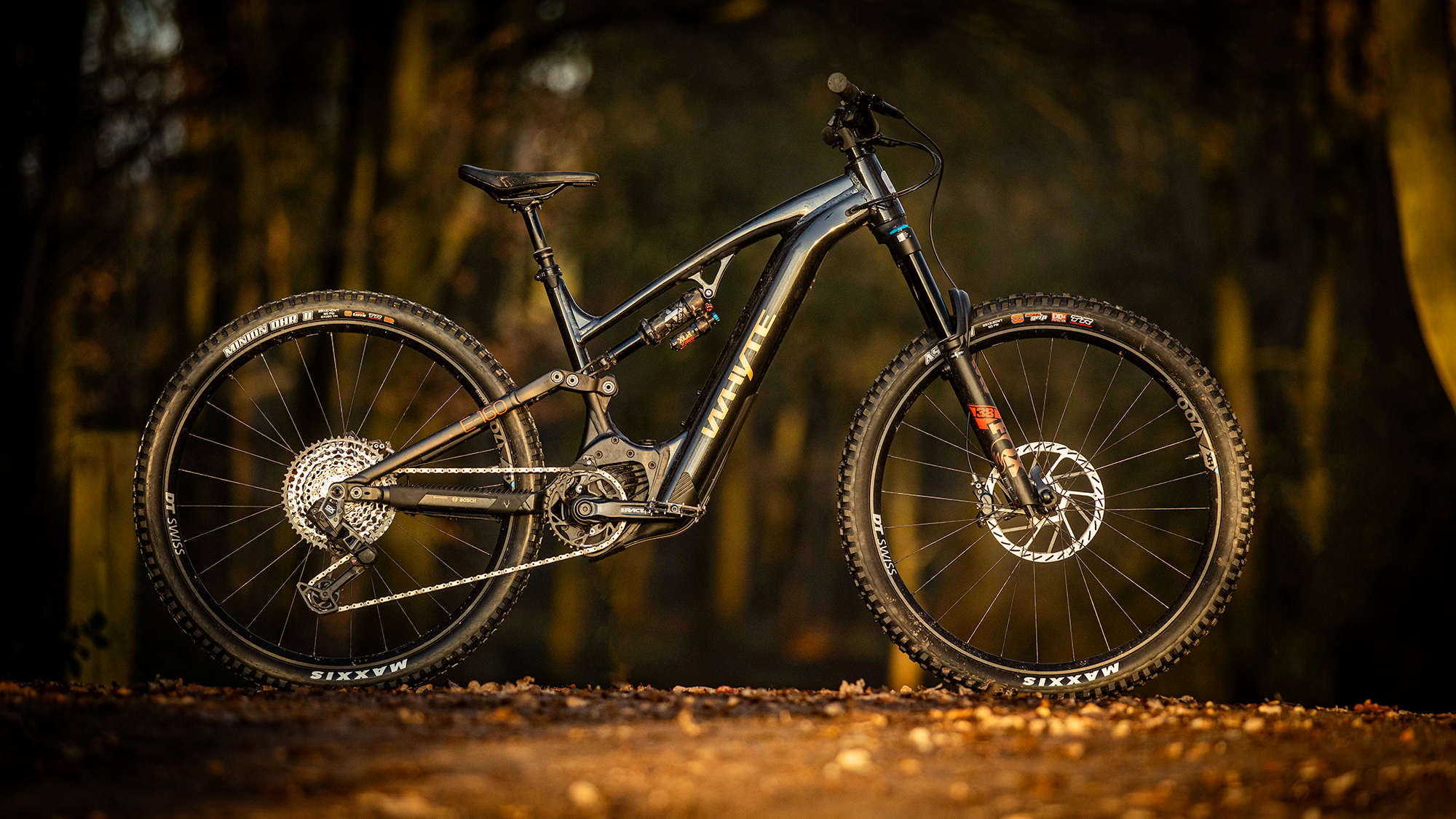
Specifications
Reasons to buy
Reasons to avoid
Whyte's e-MTB bikes have been getting praise from us and many other mags and websites since their launch and during our testing we found that the E-160 RSX is a great example of why they work so well. For 2024, Whyte have improved the RSX's spec and lowered the price by a grand.
Taking learnings from the excellent Whyte E-150 series, at first glance the E-160 RSX has a very similar look to its predecessor, but the frame is actually very different. It's been beefed up in all the right areas and the downtube now incorporates a sliding rail for easier battery removal. There are loads of weatherproofing details on the frame too.
Componentry choices are top-notch for an e-bomber such as this and at the heart of the bike is a Bosch Performance CX motor powered by a large capacity 750Wh battery. The suspension comes in the form of a Fox 38 Float Performance Elite 160mm fork and a 44mm offset/ Fox Float X Performance Elite shock. For 2024, the drivetrain has been upgraded to SRAM's excellent GX EagleTransmission, you also get SRAM CODE RSC brakes with 220/200mm rotors, and a DT Swiss HX1700 wheelset.
Tester Mick Kirkman found it hard to fault in his review, saying. "The RSX delivers beautifully composed handling and suspension and excels in steep and demanding DH terrain, but being noticeably heavy means it demands some muscle to push it to the limits of its agility. The flipside of this, however, is the E-160 is incredibly stable, assured and easy to steer for anyone and has got your back wherever you end up while maximizing the huge range of Bosch’s sorted CX system."
For more details, check out our latest Whyte E-160 RSX review.
3. Best lightweight electric mountain bike
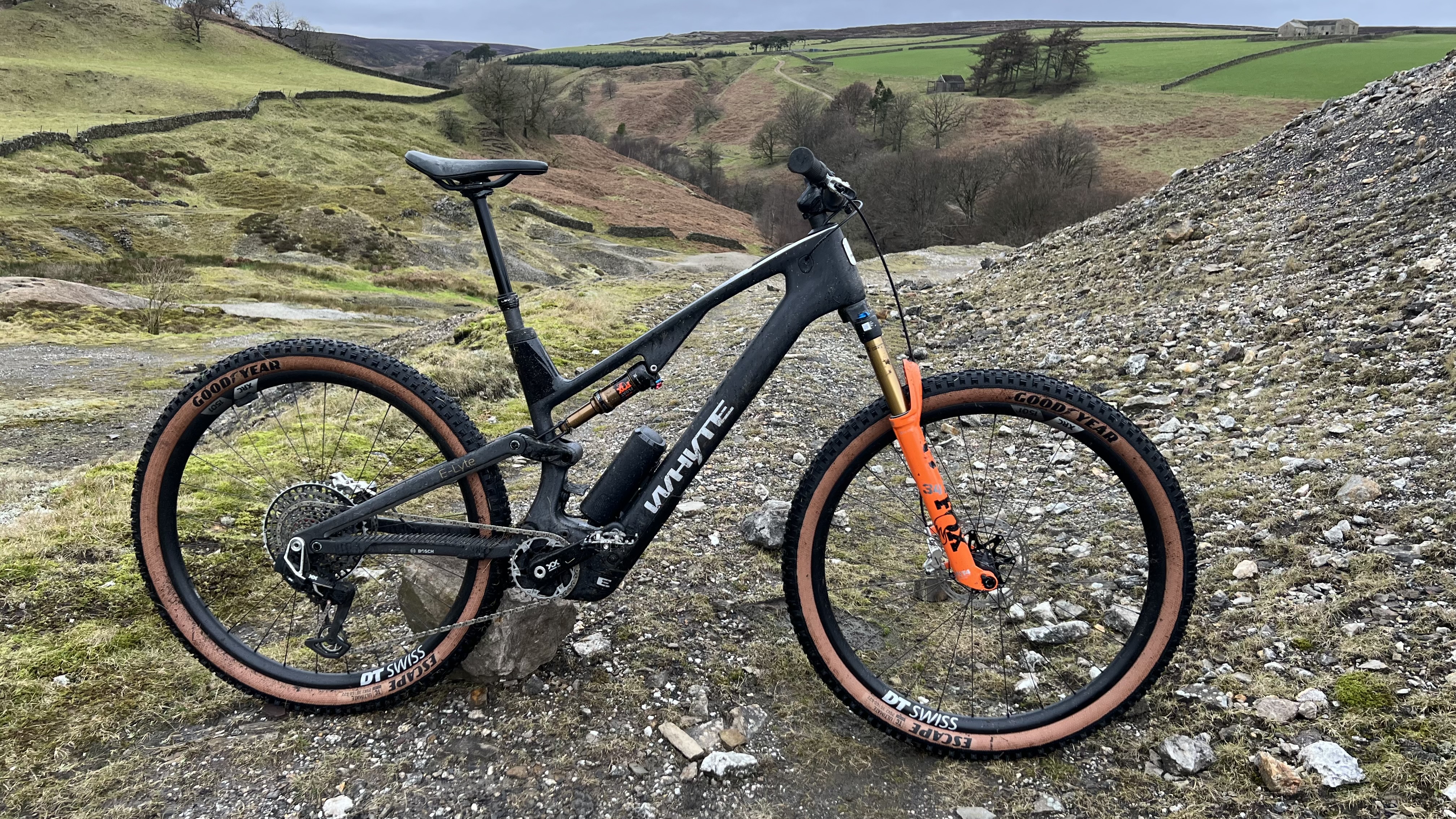
Specifications
Reasons to buy
Reasons to avoid
Along with its more aggro-intentioned 150mm sibling, the E-Lyte 140 Works is Whyte's newest e-MTB. Rather than being designed to be super capable, like the full-fat E-160 RSX above, the E-Lyte 140 is all about riding as fast and as far as possible – and it does that extremely well.
Our size large test bike weighed in at an impressive 17.4kg and uses a lightweight carbon frame with Bosch's SX lightweight motor and a 400Wh battery. The SX offers 600 watts of peak power, which is twice that of most lightweight rivals – including the Turbo Levo SL II. At 55Nm, torque levels are similar though, so you'll need to work harder to get maximum watts out of the motor compared to an 85Nm full-fat e-MTB.
Components are definitely at the XC/downcountry end of the spectrum, suspension comes courtesy of a Fox 34 FIT4 Factory 140mm travel fork and Fox Float Factory Evol LV 135mm shock.
Our E-Lyte 140 Works test pilot, Guy Kesteven said, "If you want to max out speed on climbs and singletrack, mix a powerful sprint with quiet efficiency and use the excellent handling to cope with XC tires and brakes though then it’s a better epic XC/trail e–MTB than anything else I’ve ridden."
For more on why it got 4.5 stars out of 5, see our full Whyte E-Lyte 140 Works review.
4. Best electric mountain bike for all-round riding
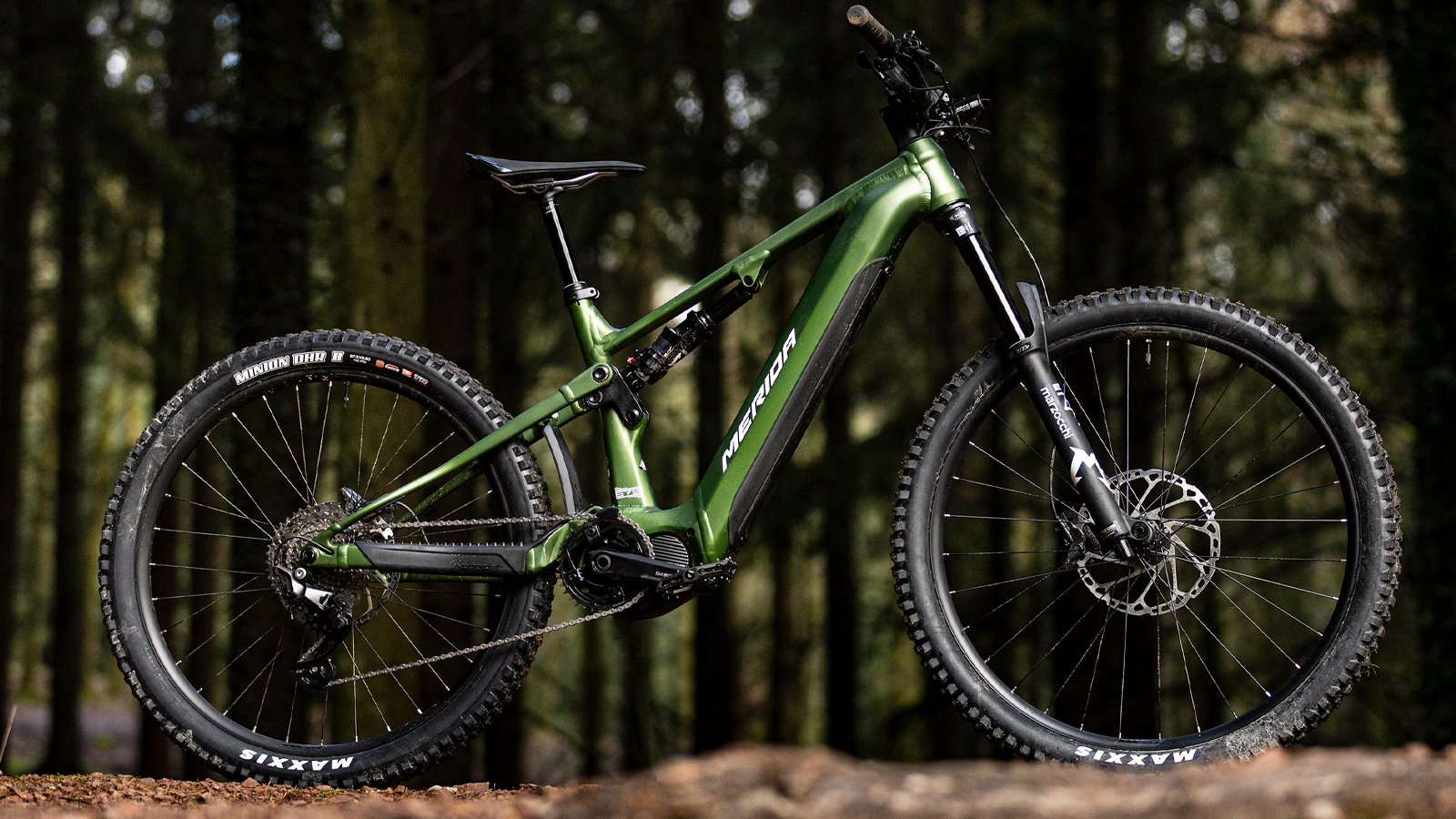
Specifications
Reasons to buy
Reasons to avoid
For 2024, Merida has radically overhauled its eOne-Sixty range and brought to it the successes from the redesign of its conventional One-Sixty bikes. That means a new suspension system that's shifted the shock position and removed the rear pivots in favor of flexstays. The updated bikes also get more progressive geometry and a sizing system that's based on bike length rather than frame size.
The new e-bike range is made up of five models, three of which are carbon and two aluminum. The carbon framed bikes are known as CF, while somewhat confusingly, the heavier aluminum options are called Lite. All the models get Shimano's latest EP801 motor, but the Lite bikes come with a removable 750Wh battery while the CF options get a fixed 600Wh option. The bikes can run an optional 360Wh range extender, but it will add 3kg of extra weight.
Rich Owen tested the eOne-Sixty 675 Lite and was really impressed with the bike which felt livelier than its 25.64kg weight (for the Mid size). It's a capable all-condition performer with confident handling and a top-spec Maxxis tire combo. In summing up, Rich said, "While it's pretty rare to find a bike that takes that much getting used to these days, I instantly felt right at home on the eOne-Sixty. The excellent suspension system and well-balanced geometry give a confident and capable ride." For more, see our full Merida eOne-Sixty 675 review.
We've yet to test the CF version, but will be doing so ASAP. The frame design is essentially the same as the aluminum option, but with less weighty materials and a smaller battery, it's a significantly lighter bike. The top-of-the-range eOne-Sixty 10K weighs in at 22.2kg for the Mid size. Selected models of the previous version of the eOne-Sixty will continue to be available. For details on how they ride, head to our eOne-Sixty 6000 review.
5. Best long travel electric mountain bike
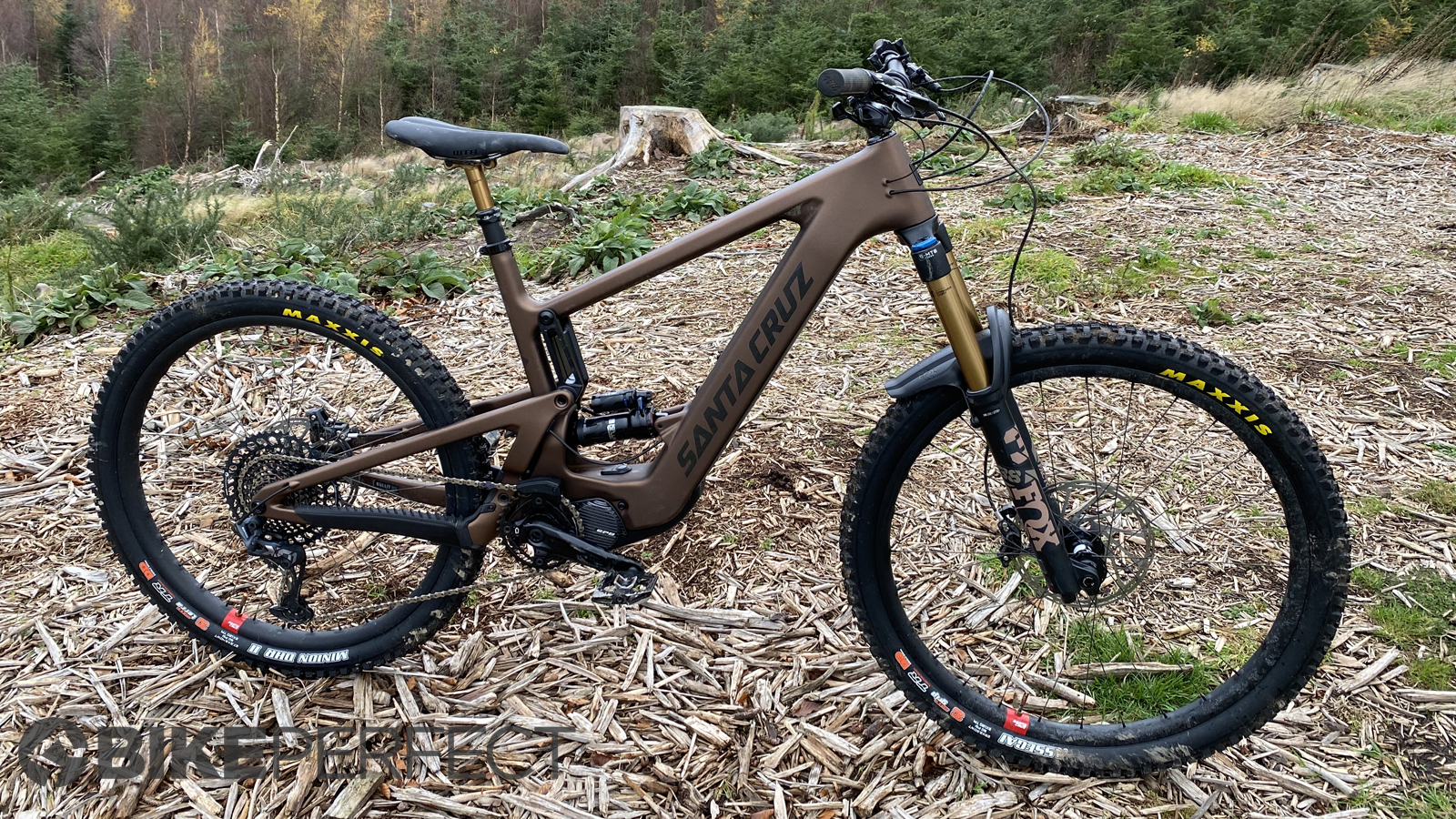
Specifications
Reasons to buy
Reasons to avoid
The Bullit has been in Santa Cruz's range since 1998, but after 2011 the Californian brand put the model on hiatus. Now it's back in a completely new format: a burly, long-travel e-MTB.
The all-new Bullit has 170mm of travel front and rear, making this a long-travel bike meant for the gnarliest terrain. Santa Cruz's Carbon CC frame is built around a mullet wheel size setup, with a 29-inch wheel in the front and a 27.5-inch wheel in the back. Supplying the power is a Shimano EP8 motor with a full-size 630Wh battery so you can cover lots of ground.
While we've been impressed with Shimano's EP8 drive system, we're also impressed by the suspension performance, both on the downs as well as the ups. Santa Cruz's VPP suspension platform allows for burly downhill riding, while also providing a stable pedaling platform. Put together, this all means the Bullit is a beast of a bike.
Guy Kesteven got really stuck into the details in his review saying that, "optimizing it for a mixed wheel setup has also injected an addictively playful and involving aspect whether you’re hustling rolling singletrack or snaking down near-vertical black runs. The suspension kinematic means the extra travel is always a bonus and never a precision- or power-sapping wallow and with the impressively low weight it’s as grin-splittingly fun on an epic ‘all the best trails’ day out as it is throwing it down in the park without waiting for an uplift."
Read our detailed review of the Santa Cruz Bullit 101 to see how it earned a spot in this guide.
6. Best electric mountain bike with agile handling

Specifications
Reasons to buy
Reasons to avoid
At first glance, the short reach and wheelbase on the YT Decoy Elite e-MTB might make it easy to overlook. However, YT now offer a large capacity 720Wh battery option (which increases the bike's range by 35 percent) and a build featuring reliable Crankbrothers/Industry 9 wheels and a Shimano XT drivetrain makes the Decoy a well specced option. We found the short reach can make climbing a bit twitchy, but it's that same geometry that made this bike a riot on tight, corner-filled trails.
A mullet setup with a 29er front wheel and 27.5in wheel in the back meant in testing, the Decoy flowed through twisty trails with ease while still taking rocks, roots and drops in its stride. Maxxis Assegai and Minion DHR II tires give fantastic all-condition grip, while top spec Fox Factory suspension helps to give a great ride and can to get you out of trouble when required.
Our tester, Rich Owen, summed up the bike in his review. "The reach maybe short compared to more recently updated rivals, but the playful yet capable Decoy offers great spec for the price and is a blast on everything from flowy to technical trails.."
For more details on how the YT Decoy Core 4 performed during testing, read our full review.
7. Best online only electric mountain bike
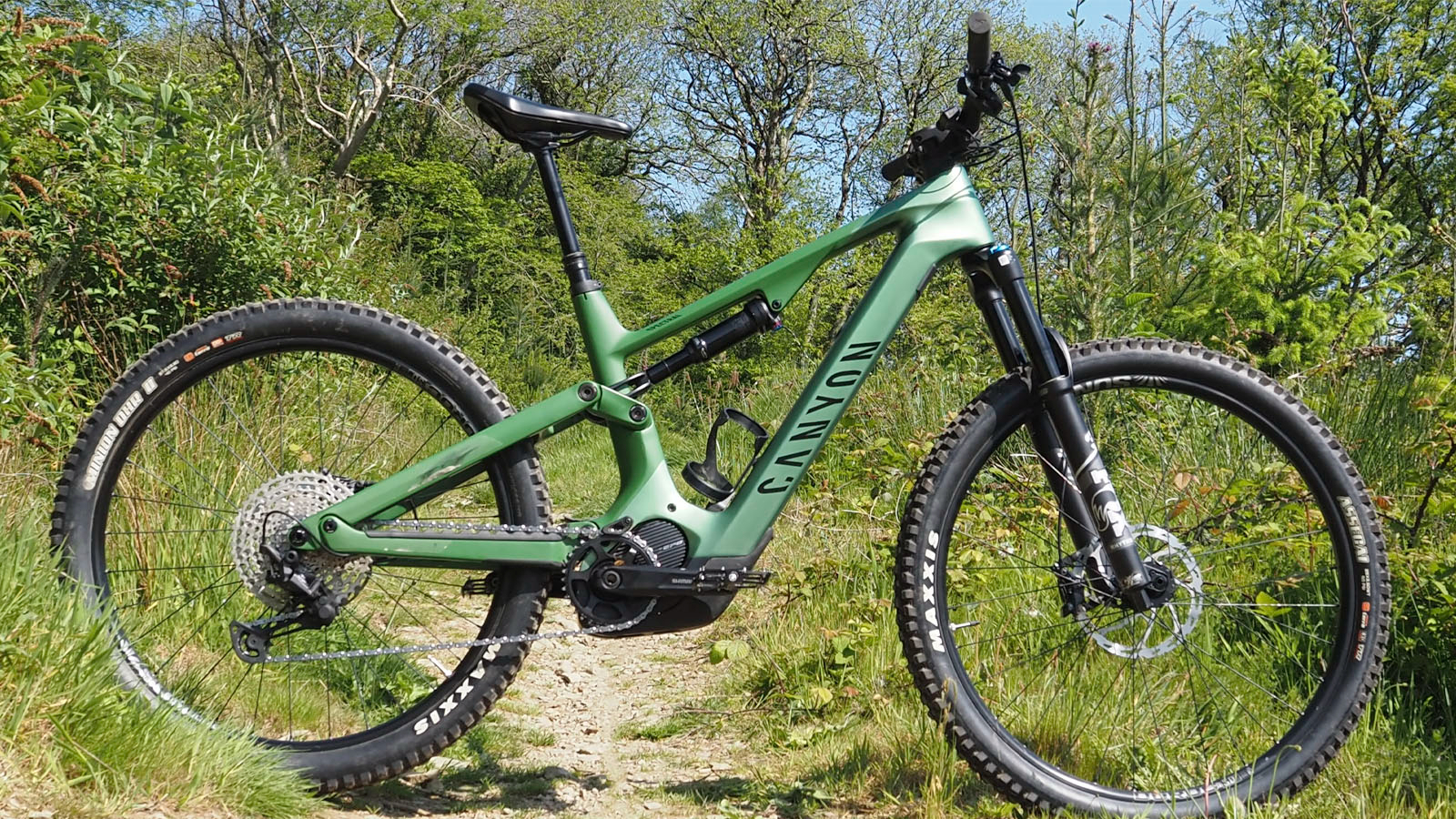
Specifications
Reasons to buy
Reasons to avoid
Canyon’s Spectral:ON CF is a do-it-all trail bike that has evolved over the years with continual updates, but always maintained a reputation as being a riot to ride. 2022 saw the Spectral get a full carbon frame, redesigned geometry and beefier battery capacity, and the 2023 Spectral brings in a 160mm fork and a motor upgrade from Shimano’s STEPS EP8 to the lighter and quieter EP801.
We reviewed a medium test model of the 2022 CF 8 with a 900Wh battery, which weighed in at a competitive 23.74g. The mullet wheel setup (29 front with 27.5-inch rear) keeps things fun and shreddy, while the low bottom bracket height helps give the bike a very planted and stable feel on the trail, and the 76.5 degrees seat angle enabled an efficient pedaling position on steeper climbs.
The bike is kitted out with a Shimano Deore XT M8100 12-speed drivetrain and SLX M7120 brakes. The suspension is handled by Fox's Float line, with 150mm of travel in the rear and 160mm in the front. Sun Ringle Duroc SD37 Comp rims (DT Swiss HLN350 on 2023 model) are outfitted with Maxxis rubber.
The Spectral:ON feels like a proper trail hoodlum that wants to smash trails pointing in every direction in equal measure. A low-slung motor and center of gravity means the Canyon plants the pilot right in the heart of the bike. That means a secure out-of-the-saddle position which massively boosts descending confidence and encourages you to hammer the trails harder. The low BB height meant more pedal strikes than most though.
Overall, reviewer Rich Owen concluded. “The Canyon Spectral:ON CF 8 does a fantastic job straddling the line between being a highly capable e-MTB while still giving an agile and engaging ride. 150mm travel suspension isn't massive, but the bike will happily take enduro and DH runs in its stride. The really impressive range means your legs are likely to run out of juice long before the battery.”
Want to know more? Check out our Canyon Spectral:ON CF 8 review.
8. Best electric enduro mountain bike
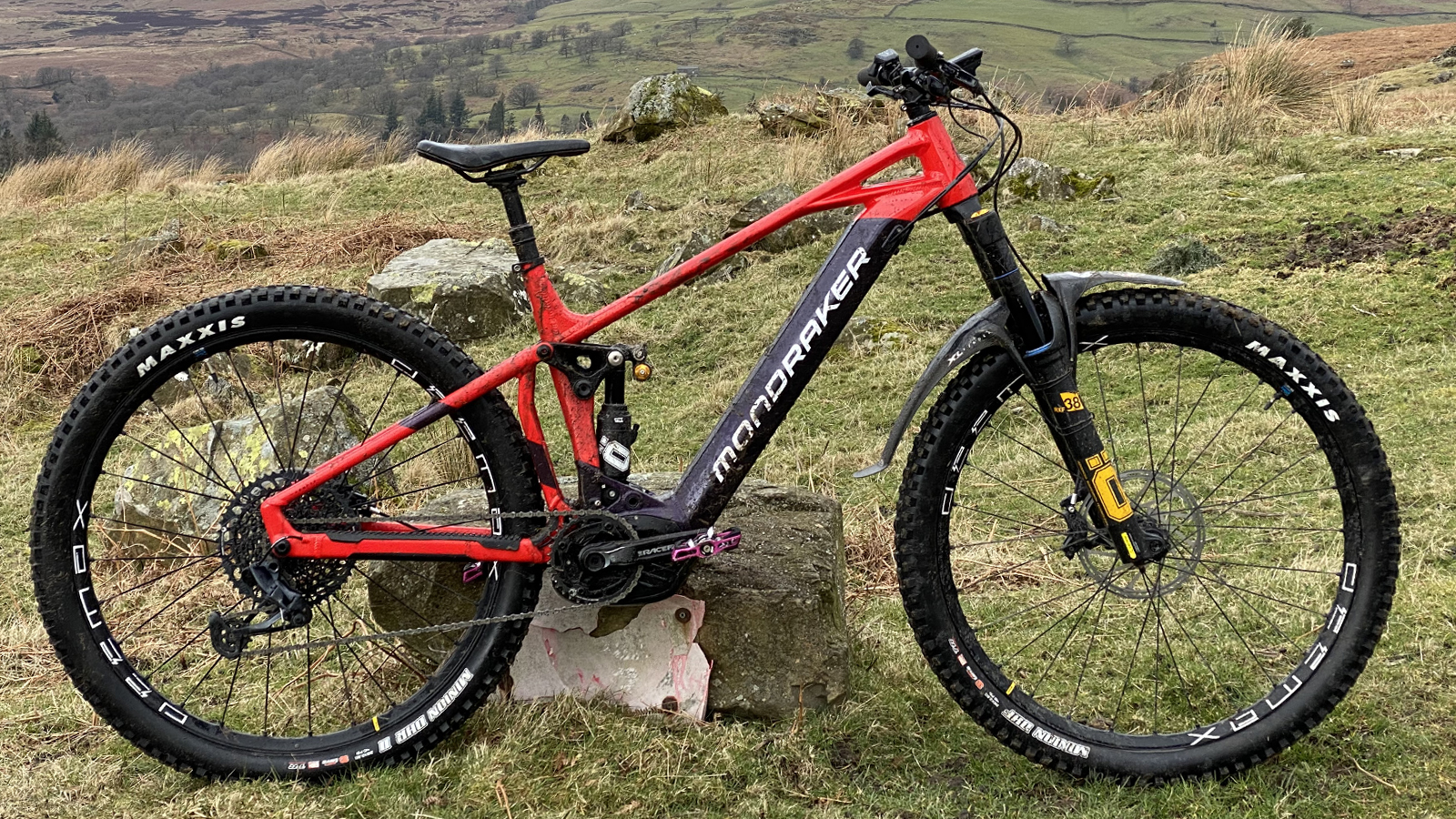
Specifications
Reasons to buy
Reasons to avoid
With the Crafty XR, Mondraker has brought its signature geometry and handling characteristics to an e-MTB with an industry-leading Bosch CX motor and battery.
The Crafty XR comes with Bosch's Smart System suite. This includes a new 3D multi-button remote control just inboard of the left grip and a new highly customizable, high-clarity Kiox 300 head unit on an ‘out front’ mount. The 750Wh battery is new for this year, but the ‘racers' favorite’ Bosch CX Gen 4 motor is still the same well-proven unit, albeit with Mondraker custom covers. The big suspension news on the XR is that you get the latest RXF 38 M.2 fork and TTX Air piggyback rear shock from Swedish damper legends Ohlins. The XR front fork also has a 170mm stroke while other Crafty bikes use 160mm forks of different types.
Mondraker has done a typically awesome job of marrying up two seemingly conflicting characteristics in the Crafty XR. The Ohlins fork and shock offer superlative damping control and sensitivity to flatter an already excellent suspension setup.
The frame, cockpit, geometry and relatively low weight keep the ride feel very alive, responsive and hugely entertaining to play and slay on and our tester Guy Kesteven "finished every tech section with a really big grin". A bigger battery and better display/management will multiply the amount of time you’ll be getting those grins, too.
The Crafty XR gets the Ohlins suspension comparatively cheaply compared to buying it separately. The only downside is the non-removable battery.
For more, see Guy's full Mondraker Crafty XR review.
9. Best electric utility mountain bike
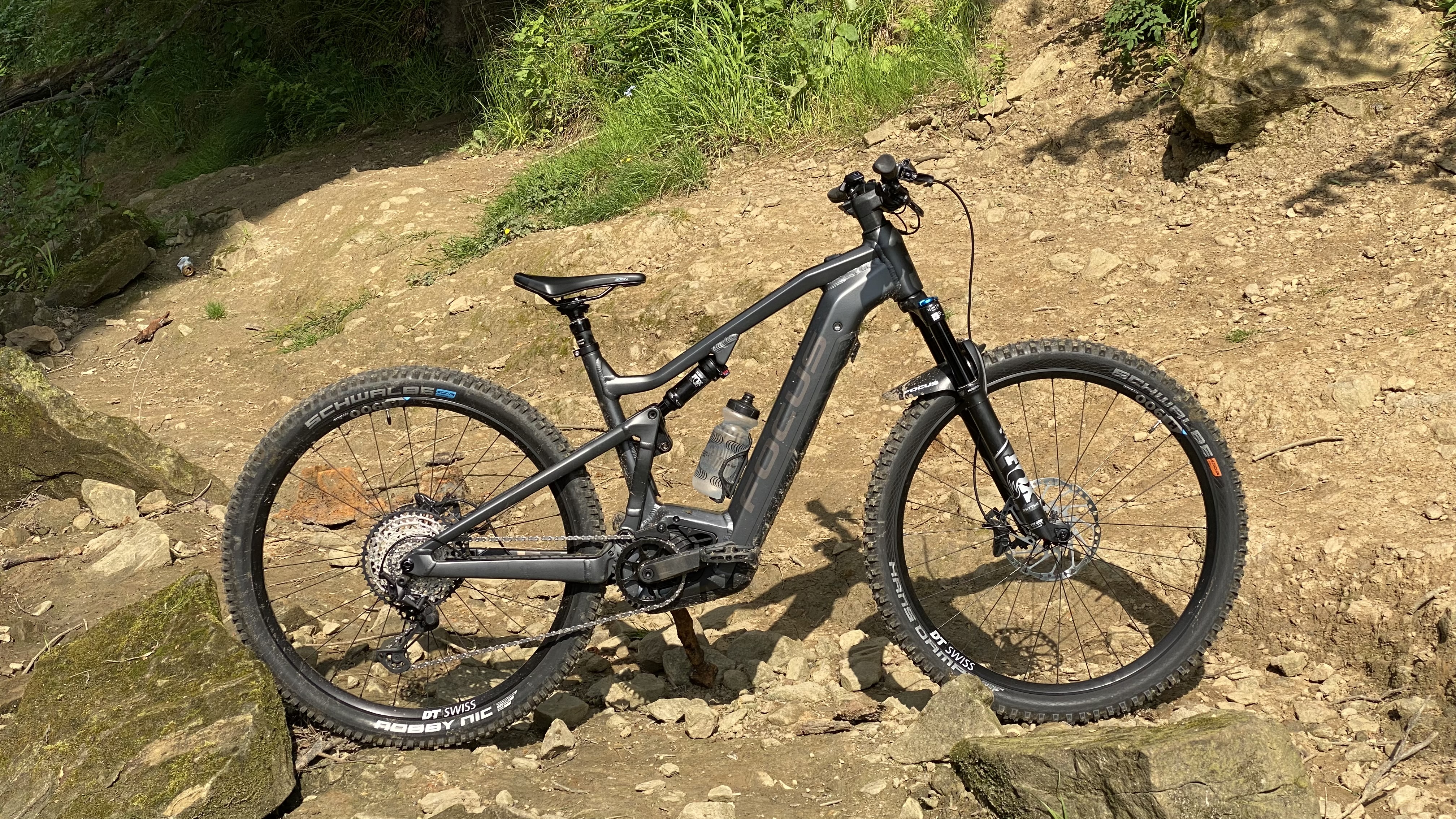
Specifications
Reasons to buy
Reasons to avoid
On the Focus website, the THRON2 6.9 is described as suitable for "...trail tours through alpine terrain to your daily commute and bikepacking", which is a pretty wide range of applications.
While we commonly think of e-MTBs as more of a self-uplift than a utility vehicle, there are plenty of riders who are looking to invest in a comfortable and enjoyable e-MTB that can ride red and blue trails but also leisurely riding too. That does mean the geometry and componentry isn't going to be as capable as other bikes, but it's still engaging enough to light up and flow at a trail center.
It's certainly not going to be a bike that will appeal to everyone, particularly UK or US riders where there is more of a send-it-only culture, but in Europe there is far more demand for the mass-appeal utility ATB type of bike.
In Guy Kesteven's words, "the THRON2 is definitely a properly balanced, long-range XC/trail e-bike with bonus ‘lifestyle’ versatility and value rather than a town bike playing dress up in the dirt." For more info on this genre-straddling bike, have a look at our full-length Focus THRON2 6.9 review.
How to choose the best electric mountain bike
Are there e-MTB restrictions?
US
In the US, rules for e-bikes vary from state to state; with 30 states classifying e-bikes as ordinary bicycles, while the remaining 20 label e-bikes as mopeds, scooters or something else altogether.
Federal law defines an electric bicycle as a "two- or three-wheeled vehicle with fully operable pedals and an electric motor of fewer than 750 watts, whose maximum speed on a paved level surface when powered solely by such a motor while ridden by an operator who weighs 170 pounds, is less than 20mph."
It's worth noting this statute defines the maximum assisted speed of the bike propelled solely by the motor, not when it's being pedaled. To make things more confusing, state regulations can supersede the federal statute.
The Bicycle Product Suppliers Association has proposed a three-class system that divides electric bikes up based on their maximum assisted speed:
For all three classes, the motor can only put out a max of 750 watts, and the class needs to be clearly labeled.
Even so, the Forest Service, Bureau of Land Management and the National Parks Service categorize e-MTBs as 'motorized', and they are only permitted where motorized vehicles are allowed. This means that the trail networks near your house might not be open for electric mountain bikes, however, some local and state land management agencies have made exceptions.
Our friends over at People for Bikes and MTB project have put together a pretty comprehensive map of trails where electric mountain bikes are permitted. You can see the full map here.
UK and EU
The UK adopted a lot of the EU's regulations regarding e-bikes, but considering Brexit, it's hard to say if these restrictions will change as things move along.
The 'Electrically Assisted Pedal Cycle (EPAC) Amendment Regulations' mandates that electric assistance can only provide 250 watts of aid and must cut out at 25kph. It also stipulates the rider must be at least 14 years old and the bike must be in motion before the motor kicks in.
Electric bikes (and riders) that meet these standards have the same legal standing as regular bicycles and are allowed on roads, bike paths and singletrack.
Australia
In Australia, e-bikes are split into throttle operated and pedal assist. Both systems must be limited to 25kph, and the throttle-operated motors can only output 200 watts while pedal assist is legal up to 250 watts. Anything that exceeds these figures is considered a motorbike and must be licensed and insured.
Are mid-drive e-bikes better?
While the best e-MTB motors can be placed in either wheel or at the bottom bracket, e-MTBs should have a mid-drive motor system. The motor and battery are the heaviest parts of the bike, and with this weight between the wheels and close to the ground, it doesn't throw your center of gravity out of whack.
Mid-motor systems also perform more efficiently at a lower cadence and have sensors to measure how hard you're pedaling to tailor the level of torque and maintain grip. The motors are optimized for trail use, with a few levels of assistance ranging from low-watt 'eco' modes to gradient flattening 'turbo'.
Batteries will be described in Watt-hours or Wh, taking both output and capacity into account – a bigger number means the battery will take you farther on a single charge, but those with more capacity are heavier which will impact the ride characteristics.
Are electric mountain bikes good for trail riding?
Improvements in design and geometry mean that the best electric mountain bikes are extremely capable and fun to ride off-road. That said there are a lot of spec considerations that will affect the way a bike performs off-road.
Many e-mountain bikes come with robust aluminum framesets, but brands are rolling out more carbon options as they get the hang of this new segment of bikes. As with analog mountain bikes, full-suspension reigns supreme when it comes to e-MTBs, and with the right suspension tune, the extra weight can improve descending. Look for robust suspension and a fork with at least 36mm stanchions for proper trail riding.
With the extra weight from the motor and battery, it takes considerably more force to slow an e-MTB down, and when you're hurtling toward an unsuspecting hiker or a hairpin corner, you're going to want four-piston brakes and 200mm rotors.
The additional weight also means the wheels will be built solid, with more spokes and wrapped in 2.5in (or bigger) tubeless tires. With rolling resistance being less of a consideration, manufacturers opt for puncture-resistant casings and more aggressive tread.
How we test electric mountain bikes
All the e-MTBs we've tested here have been put through many hours of riding on different terrains and in varied weather conditions. We test the bikes within their intended use, but we also push them to their limits to fully assess their components, build, battery and motor, ride and performance.
Meet the testers
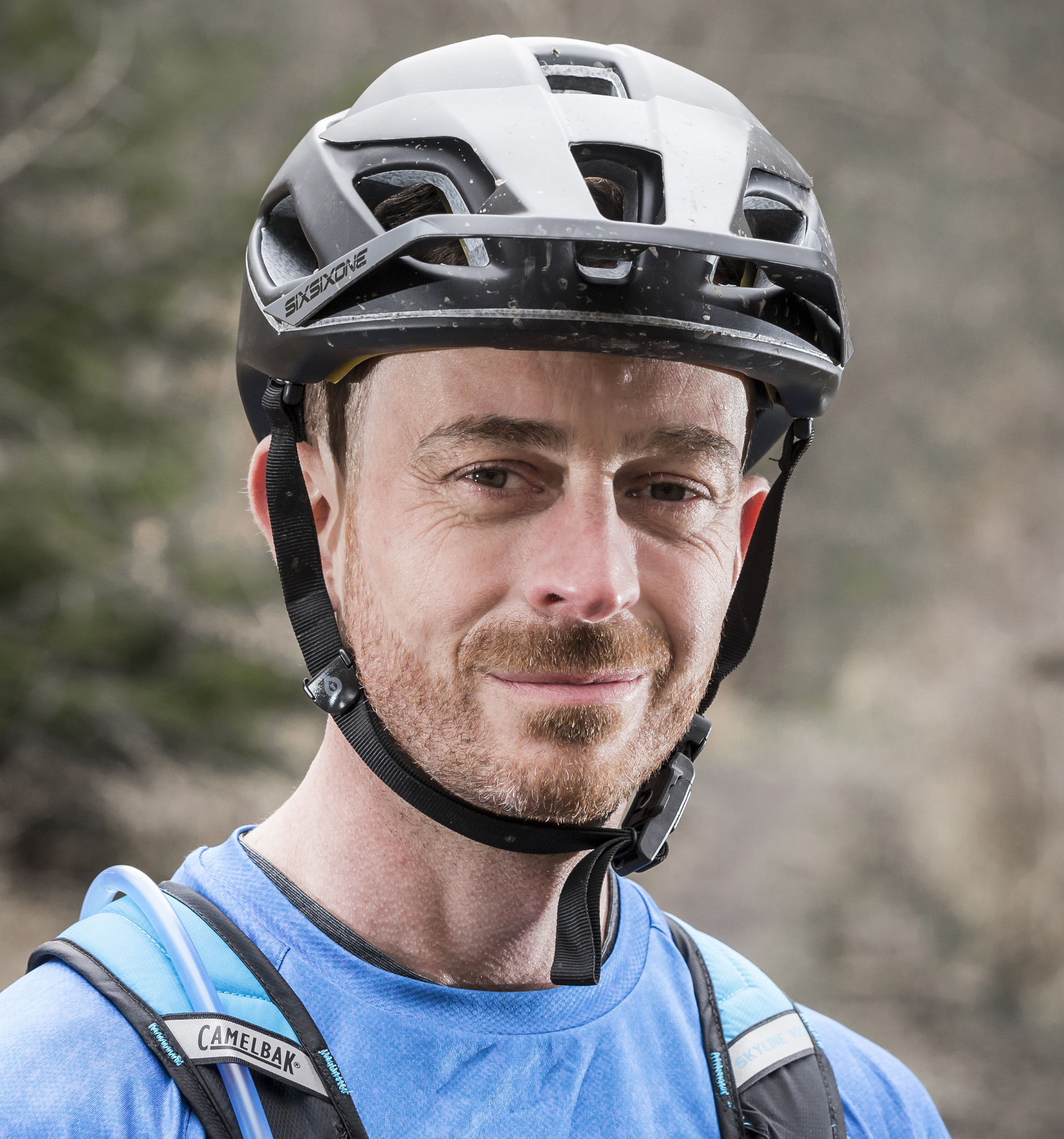
Rich has been riding mountain bikes for more than 30 years and testing bikes and kit for over a decade. He mostly rides trail bikes with and without an electric motor.
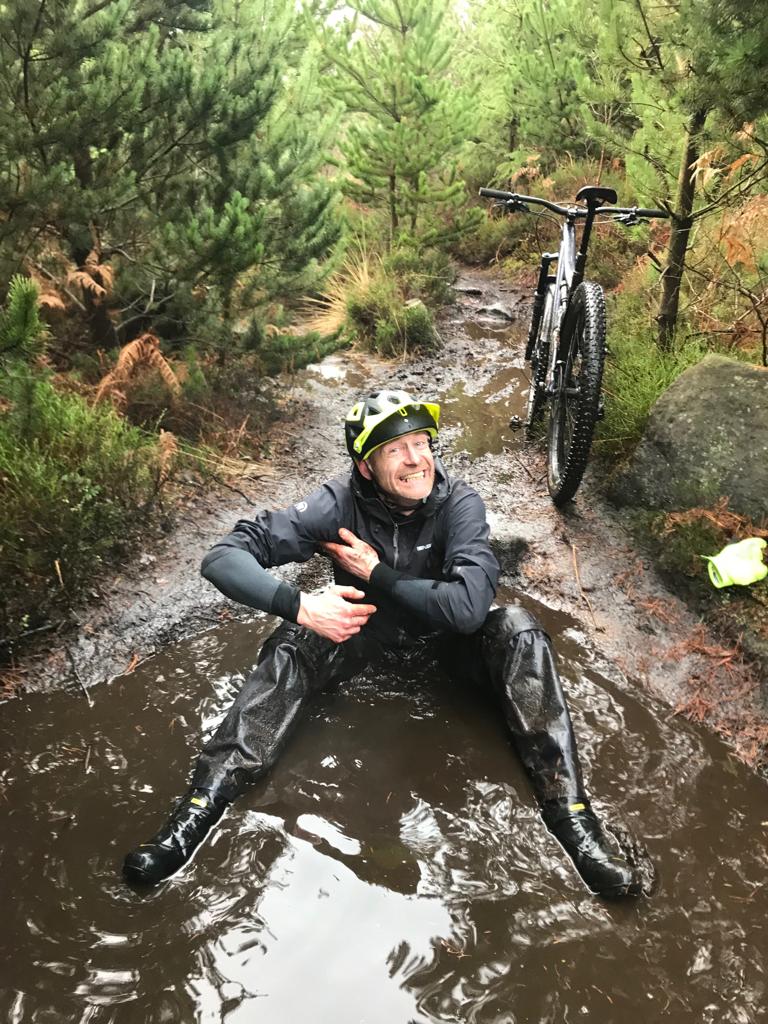
Guy's been testing and writing about mountain bikes since the '90s. He’s written several million words about several thousand test bikes and a ridiculous amount of riding gear.

Graham is all about riding bikes off-road with almost 20 years of riding experience covering downhill, enduro, and gravel.
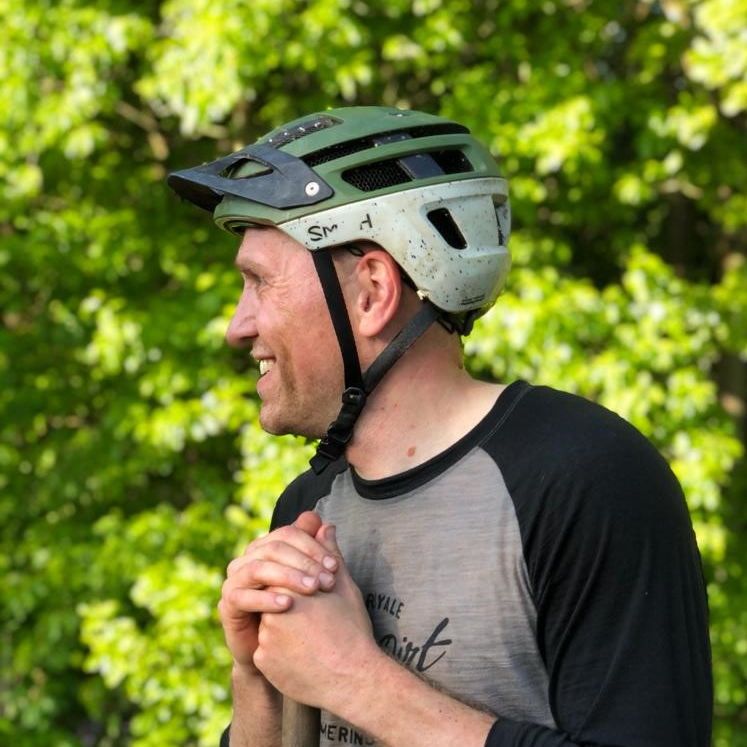
An ex-elite downhill racer, Mick's been mucking about and occasionally racing mountain bikes for over 20 years. Nowadays, he's mostly riding enduro-style terrain on conventional and electric bikes.

Rich Owen joined the BikePerfect team as editor in 2021. He's worked as a journalist and editor for over 24 years, with 12 years specializing in cycling media. Rich bought his first mountain bike (a rigid Scott Tampico) in 1995 and has been riding MTB for almost 30 years.
Current rides: Merida One-Forty 6000, Banshee Paradox, YT Jeffsy Core 3, Saracen Ariel 30 Pro
Height: 175cm
Weight: 69kg
- Guy KestevenTechnical-Editor-at-Large
- Graham CottinghamSenior reviews writer, Bike Perfect
- Mick KirkmanFreelance writer
